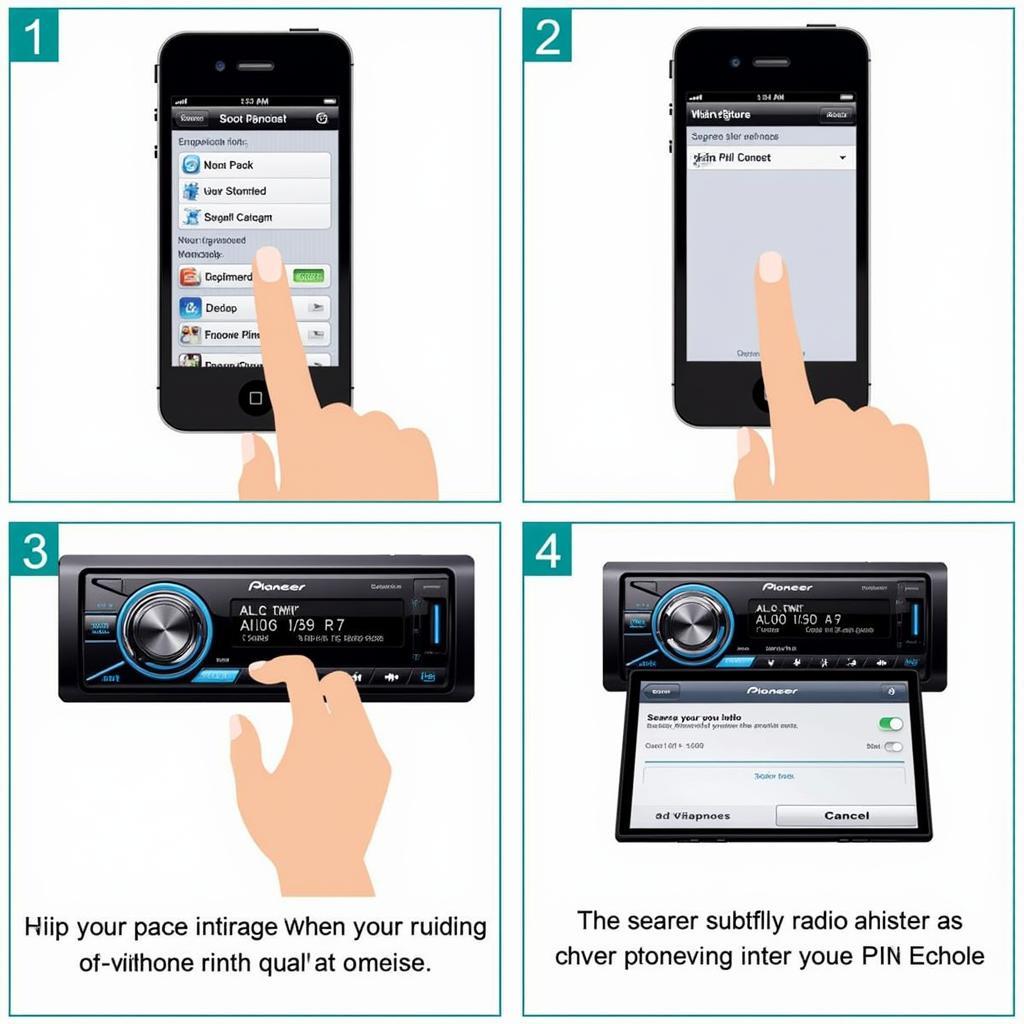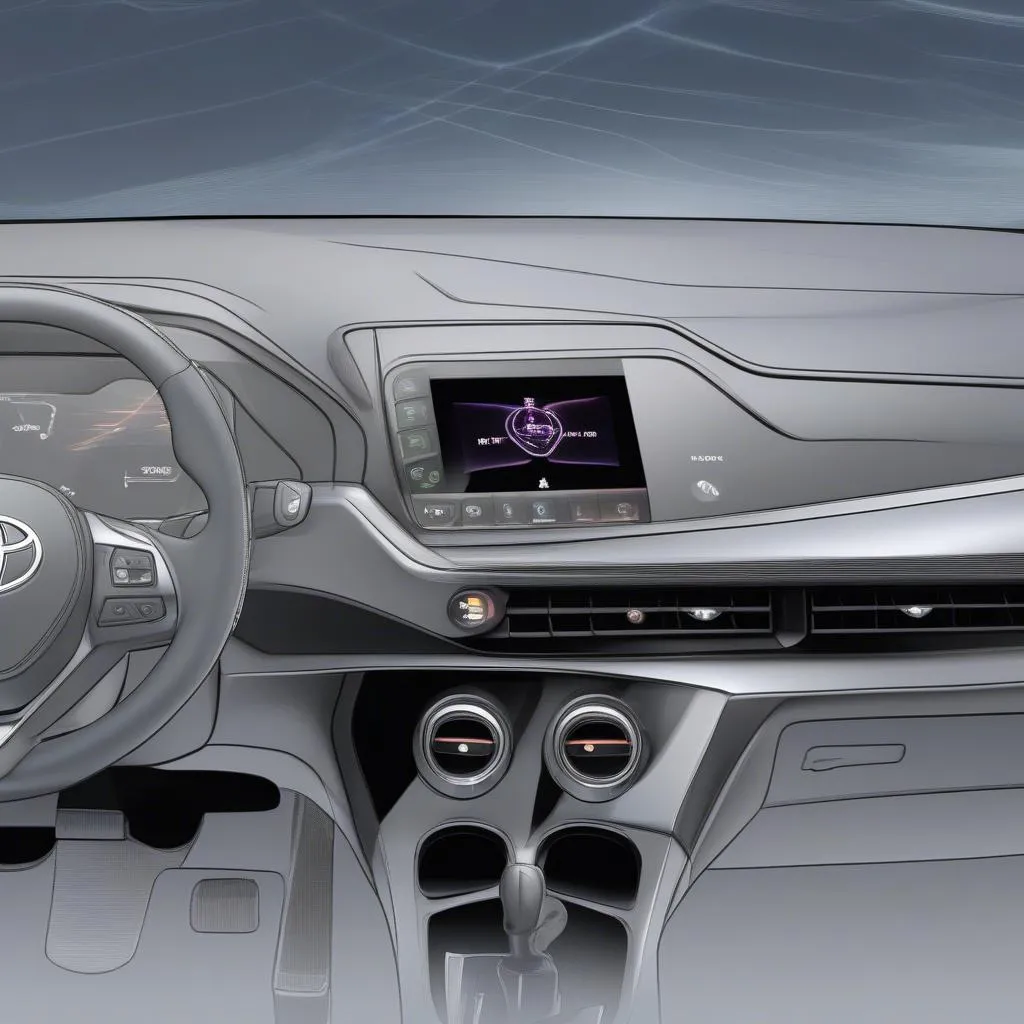Connecting your phone to your Pioneer car radio via Bluetooth opens up a world of hands-free calling and wireless music streaming. Setting it up is generally straightforward, but sometimes requires a little troubleshooting. This comprehensive guide will walk you through the process of how to set up Pioneer car radio Bluetooth, covering various models and potential hiccups along the way.
Understanding Your Pioneer Car Radio and Bluetooth Technology
Before diving into the setup process, it’s helpful to understand the basics of Bluetooth technology and how it interacts with your Pioneer car stereo. Bluetooth is a short-range wireless technology that allows devices to communicate with each other. In the context of your car, it enables your phone to send audio signals (music, phone calls) to your Pioneer head unit wirelessly. Different Pioneer models have slightly different interfaces, so familiarizing yourself with your specific model’s features will make the setup smoother. You’ll find this information in your car’s manual or on the Pioneer website.
Step-by-Step Guide to Pioneer Car Radio Bluetooth Setup
Most Pioneer car radios follow a similar Bluetooth pairing process. Here’s a general guide:
-
Put your Pioneer car radio in Bluetooth pairing mode. This usually involves pressing a dedicated “Phone” or “Bluetooth” button on the head unit. Sometimes, you may need to navigate through the menu on the screen. The display will typically indicate that it’s searching for a device.
-
Make your phone discoverable. Go to your phone’s Bluetooth settings and turn on Bluetooth. Then, select the option to make your phone visible to other devices. This might be labeled as “Discoverable” or “Pairing Mode.”
-
Select your Pioneer car radio on your phone. Your phone should display a list of available Bluetooth devices. Look for your Pioneer car radio’s model number or a generic name like “Pioneer BT.” Select it to initiate the pairing process.
-
Enter the PIN (if required). Some Pioneer models require a PIN code for pairing. This is often “0000” or “1234,” but check your car radio’s manual for the correct code.
-
Confirm the pairing on both devices. Once the PIN is entered correctly, you’ll need to confirm the pairing on both your phone and the car radio.
 Pioneer Car Radio Bluetooth Pairing Process
Pioneer Car Radio Bluetooth Pairing Process
Troubleshooting Common Pioneer Bluetooth Setup Issues
Sometimes, the pairing process doesn’t go as smoothly as planned. Here are some common issues and how to fix them:
-
Can’t find the Pioneer car radio on my phone: Ensure your car radio is in pairing mode and your phone’s Bluetooth is turned on. Try restarting both devices. Also, make sure your phone is compatible with the car radio’s Bluetooth version.
-
Incorrect PIN entered: Double-check the correct PIN in your car radio’s manual. Try the most common codes like “0000” and “1234.”
-
Connection drops frequently: This could be due to interference from other devices. Try moving other electronic devices away from the car radio. Updating your car radio’s firmware might also resolve the issue.
-
Poor sound quality: Ensure the volume is adjusted correctly on both your phone and car radio. Check if any audio settings on your phone or the head unit are affecting the sound quality.
Advanced Features and Settings
Once you’ve successfully paired your phone, explore the advanced Bluetooth features your Pioneer car radio might offer:
-
Phone Book Access: Many Pioneer models allow you to access your phone’s contact list directly from the head unit, making hands-free calling even easier.
-
Audio Streaming Control: Control music playback (play, pause, skip) from the car radio controls.
-
Voice Recognition: Some Pioneer car radios support voice commands, allowing you to make calls or control music using your voice.
Why Won’t My Phone Connect to My Pioneer Bluetooth?
This is a common question. Often, the issue stems from the car radio not being in pairing mode or the phone’s Bluetooth being off. Less commonly, incompatibility between the phone and car radio’s Bluetooth versions can cause problems. Always consult your car’s manual for specific instructions related to your model.
Conclusion
Setting up Pioneer car radio Bluetooth is typically a simple process, allowing you to enjoy the convenience and safety of hands-free calling and wireless music streaming. By following the steps outlined in this guide and troubleshooting any common issues, you’ll be connected and ready to hit the road in no time. Remember to always consult your specific car radio manual for detailed instructions and troubleshooting tips.
FAQ
-
What is the default PIN for Pioneer car radios? The most common default PINs are “0000” and “1234,” but always refer to your car radio’s manual for the correct code.
-
How do I disconnect a Bluetooth device from my Pioneer car radio? Usually, you can disconnect a device through the Bluetooth menu on the car radio’s display.
-
Can I connect multiple phones to my Pioneer car radio via Bluetooth? Some Pioneer models support multiple phone connections, but usually only one can be actively connected for calls.
-
My Pioneer car radio keeps disconnecting from my phone. What should I do? Try restarting both devices, moving other electronic devices away from the car radio, or updating the car radio’s firmware.
-
How do I update the firmware on my Pioneer car radio? Refer to your car radio’s manual or the Pioneer website for specific instructions on how to update the firmware.
-
My phone is paired but I can’t hear any music. What’s wrong? Check the volume levels on both your phone and the car radio. Also, make sure the correct audio source is selected on the head unit.
-
My Pioneer car radio doesn’t have a dedicated Bluetooth button. How do I access the Bluetooth settings? Consult your car radio’s manual. The Bluetooth settings might be accessible through the main menu on the display.


